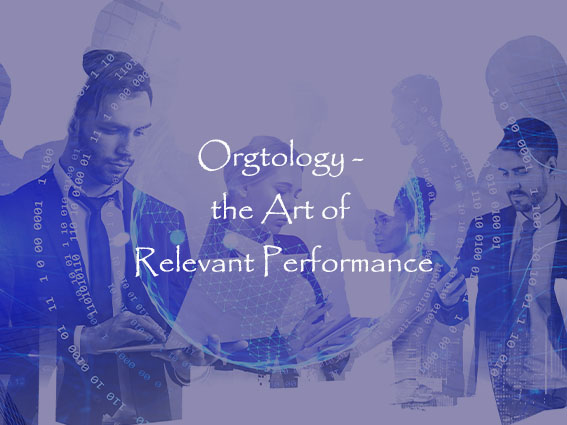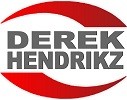The Orgtology Blog
Hypothesis 2x on Inverse Duality
Please Note:
This article is replaced with a new version.
We are leaving this old version on the site for research purposes.
Please click on the link below to access the latest version of this article.

Hypothesis 2x – the Foundation of Orgtology
Hypothesis 2x opens the study of orgtology. It creates eight core theories; four for orgamatics and four for organamics. Its indirect claim is that an organisation can only exist through relations and relationships. To relate, entities must interact, which implies a cycle of projecting and receiving. This means that there must be an exchange between projective and receptive activity. E.g., when I share a thought with a friend, I project it through language. In turn, she receives my thought by listening. The conversation will last for as long as we continue this projecting and receiving cycle. In Org, a precondition is that projective and receptive forces must draw from the same resource pool. An organisational construct is thus an inverse duality. I defined Hypothesis 2x of Inverse Duality in 2018. It is the result of 20 years of thinking about organisations, their function, and origin.
What is Inverse Duality?
Items that create the same thing, but that are opposite or contrary in position, direction, order, or effect, are dual. Something that is the reverse of its dual part, is inverse. In orgtology, inverse duality happens when opposites draw from the same resource pool. This means that an increase in resources of one part will bring a decrease in resources to the other part. E.g., the relationship between strategy and operations. They create an inverse duality because they draw from the same resource pool. If I increase resources for strategy, I decrease such for operations.
We often use the term "binary" as a synonym for "duality". Both terms hold something that has two parts. Their difference lies in the relationship that their parts have. Duality always poses an opposition between two concepts or aspects of something. From there the term "dualism". A binary is the bijective base-2 numeral system, which only uses digits. Therefore, the parts of a binary do not oppose each other. Also, the parts of a duality are not necessarily quantifiable.
In orgtology the duality that creates Org will always show an inverse relationship. In this, there is always two opposing forces that draw from the same resource pool. E.g., Org has limited people, money, and assets. It uses these resources to execute its strategy and run its operations. Where we use resources for strategy we have less for operations, and vice versa. Also, the two parts within a duality must need each other. E.g., without strategy, operations will face irrelevance. Without operations, strategy will have no meaning. They thus form an interdependent whole. We further hold that parts only need each other if one part is projective and the other receptive. In this lies their opposition. Something projective is disruptive. It rearranges time and space, which means it creates new activity. Something receptive aims to create order. It helps arrangements within time and space to repeat itself. This means it arranges activity as processes within systems. Something projective will always need something receptive, and contrarywise. E.g., strategy is projective because it disrupts. Operations is receptive because it brings order. They oppose each other and in that they keep Org alive. The one ensures performance whilst the other secures relevance. They are an inverse duality.
Projective and receptive forces that interact create activity. This brings about relations and relationships. The difference between the two is that a relationship has reciprocity. A relation does not. E.g., if you are in love, there is mutual dependency. One can call this interdependency, which means that the parts that form a whole need each other. A relation is a physical proximity, such as having a sibling or standing on the ground. There is no reciprocity in a relation. E.g., you need gravity, but gravity does not need you. Therefore, you have a relation to the ground and not a relationship with it. In so, I can say that I am related to my brother and we also have a good relationship. Activity creates this. Org is activity that interacts within the same purpose and towards the same intent. To establish itself, Org will need relations and relationships. The one creates dependency and the other demands interdependency. Without these realities, Org will cease to exist.
There are several key concepts that create Org. All of them are inverse and dual since they all draw from the same resource pool. This resource pool is the people, money, and assets available to Org. These concepts all exist through projective and receptive pairs. The table below shows how these concepts manifest.
| Concept: | Projective Force: | Receptive Force: |
| Organisation | Relevance | Performance |
| Organisational Consciousness | Leadership | Management |
| Orgtelligence | Tacit (human) intellect | Implied (systems) intelligence |
| Contained Work | Projects (non-repetitive activity) | Processes (repetitive activity) |
| Empowered Results | Effectiveness | Efficiency |
| Intelligence | Intent | Purpose |
| Innovative Paradigm | Revolution | Evolution |
| Influenced Identity | Change | Transformation |
| The Relevant and Performing Organisation | Entropy | Growth |
| The Relevant and Performing Individual | Chaos | Order |
It is important to note that something is never absolutely projective or receptive. The trait of an activity is defined by the concept that it creates. E.g., for Org, anything that maintains who and what it is will be receptive. Anything that changes it, is projective. Therefore, Org decides what is projective and receptive. Projective parts will create its intent and receptive parts will endorse its purpose. From there we derive the orgtology saying: "Purpose is who you are, and intent is what you want to make of that."
The Hypothesis
Hypothesis 2x is the opening assumption for orgtology. It gives a first assumption to the eight theories of orgtology. You can read more on orgtology, orgamatics, organamics and their theories in my writeups: "What is Orgtology?", "What is Orgamatics?", and "What is Organamics?" Performance and relevance create an inverse duality that enables organisations to exist. Performance is receptive and perfects a known past. It turns purpose into efficient processes. Relevance is projective and creates an unknown future. It turns intent into effective strategy. Purpose enables performance and intent ensures relevance. They are dual because without one the other loses its meaning. They are inverse because they draw from the same resource pool.

What is Orgtology?
The hypothesis is: An organisation is a collaboration between human minds and systems intelligence that share a common purpose. To perform, the organisation must enable its energy through receptive forces. To stay relevant, it uses projective forces that will drive its intelligence. Jointly all projective forces drive intent and all receptive forces enables purpose. In turn, intent will secure relevance and purpose will ensure performance. These forces draw from the same resource pool and are interdependent. Therefore, they are dual and inverse. Yet, if two organisations have the same purpose and intent, they will show different results because the algorithm that this binary creates will have to adjust to the unpredictable and irrational nature of the abstract dynamics that human minds create. According to the hypothesis, abstract dynamics will change the results of similar companies. Even if their operations and strategy are the same, the results will still be different. They can have the same purpose and processes, intent, and strategy. They could hold the same resources and run within the same context. Yet, the humans that run them can never be the same, and in so, will deviate from intended results.
Human consciousness allows us to predict a future. This influences the way in which we survive. Therefore, we always aim to negotiate the most favourable future position for ourselves. This dynamic will change any algorithm. In Hypothesis 2x, the "2" shows a projective / receptive duality, and "X" is an unknown dynamic. "X" is the unpredictable element that will change the outcome of a duality. It makes things unique. In this hypothesis, the projective / receptive binary is the dependent variable. An abstract dynamic is the independent variable. We assume that such dynamic will change the result of the binary. When you add abstract dynamics to logical flow, you will get something unique. We refer to the "x" as an X-Factor. It is what makes organisations unique.
The X-Factor
We work with the projective / receptive duality of Hypothesis 2x in orgamatics. The orgamatics theories aim to create an equilibrium between opposing forces. Each force is always either projective or receptive. Human intellect and process intelligence create orgtelligence. We have projects and processes that define our work. Then there is effectiveness and efficiency that measure our results. To grasp these dual aspects of Org, we cluster our work, orgtelligence, and results in three systems. They are the resource-, the orgtelligence-, and the relationship- systems. Jointly, these systems create dynamics, which will create an X-Factor. In turn, the X-Factor will create, change, or destroy the dualities of orgamatics. It is an ongoing cycle.
In organamics we work with three dynamics that show the effects of an X-Factor. They are leadership-, team-, and intrapersonal- dynamics. By manipulating these dynamics, we can control the X-Factor. We use the theories of organamics to understand these dynamics. In so, we can grasp the X-Factor through a study on intelligence, paradigm, and identity. The word "dynamic" alludes to something that is unpredictable. Therefore, it will always be difficult to grasp. On the flipside, it is the unpredictable nature of "dynamics" that makes Org unique. Without the X-Factor, organisations will be reduced to predictable systems. They will lose their unique identity and become extinct.
The Effect of Hypothesis 2x
Hypothesis 2x creates a conscious collaboration between systems intelligence and human intellect. It sets the table for a predictable organisation that can handle unpredictable dynamics. This enables us to run performance that we can absolutely control. In so, we will have energy and intelligence available to negotiate our relevance. Think of a hawk flying high. It slowly glides in a circle, as if in energy-saving mode. It needs little energy and intelligence to glide in this way. But once it sees a rabbit or mouse, it must use all its energy and intelligence to make the kill. It stays in "auto" mode until there is a need for "manual" operation. The way in which it uses its resources and skill will create its X-Factor. In addition to function within purpose, humans can create future intent. This makes us even more able to be an X-Factor of note. Org can learn quite a bit from biological structures. The human body especially teaches us a lot. It is an advanced structure of collaboration between systems intelligence and tacit intellect. You cannot experience much of what happens inside your body. Most of us have never seen any of our internal organs. We cannot precisely pinpoint them and do not really know what they look like. Not in any detail at least. All our senses are geared to experience and respond to an external environment. Systems run our biological structure, whilst tacit intellect drives our relations and relationships. Org should do the same.
Projective and receptive elements create distinct positions within Org. These positions are all dual, but their relationship is not always inverse. In the earlier table I showed concepts that create Org. All these relationships are inverse because they are contained within Org. The table below shows positions that hold direct relationships since their parts can decrease or increase independently. In these examples projective elements are not contained within the organisation. E.g., Org cannot control the profitability of a customer or the emotion of an employee. They project from the outside. The aim of the positions given below is to secure the relevance and ensure the performance of Org. Such influence can be positive or negative. To deal with this, we use inverse duality, as shown in the first table. It is our task to secure the best possible position for Org by facilitating an equilibrium between the elements of each position. The table below only show a few examples from a pool of plenty.
| Projective Force: | Receptive Force: | Position: |
| Customer profitability | Relationship strength with the customer | Customer Relationship Management |
| Emotion and drive of an employee | Knowledge and skill of an employee | Human Resource Development |
| Probability | Mitigation | Risk Management |
| Impact | Business continuety | Disaster Management |
| Need for change | Need for order | Cost Management |
| Outcomes | Outputs | Strategy Management |
| Output targets | Energy | Operations |
| Influence of a stakeholder | Relationship strength with a stakeholder | Stakeholder Management |
| Demand | Supply | Supply Chain Management |
Where we add humans to these relationships, their ratios change. The people who work with them will create vision and plans that will change any current status quo. Humans give Org its X-Factor. In organamics we study the dynamics that create this X-Factor. Human minds are unpredictable in that they can create infinite possibilities. This makes human minds invaluable to any system. Org must have methods to manage this. We use leadership, team-, and intrapersonal- dynamics to manage the human minds of Org.
Hypothesis 2x asserts that Org will always need both humans and systems. Their alliance makes Org possible.

Join the Orgtologist Certification Program (OCP) - Empowering Executive Teams Worldwide
Copyright
© 2019: CFT Hendrikz
When you subscribe to the blog, we will send you an e-mail when there are new updates on the site so you wouldn't miss them.




